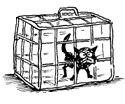|
Obdicut posted:I was thinking that Vietnam era they'd be unlikely to use a foam originally developed around WWII. A quick look at Wiki shows that the Navy had developed its own foam by the mid 1960s, and there were superior foams before that, too. Did some digging around and found some interesting stuff. Naval aviation comes with a high risk of conflagration. Most of these are small low-intensity fires caused by crashes or fuel leaks. They happen a lot. If I remember correctly, the fires were a daily occurrence on US Navy carriers on Yankee Station in Vietnam. If attacked aggressively and immediately, these fires can be extinguished. Against the kinds of low-intensity fires a carrier would experience during flight operations, evidence shows WWII-era foam was very effective. But if you don't get small fires out quickly...then small fires quickly become big ones, as illustrated by the Forrestal and Enterprise fires in the 1960s. Then there are catastrophic fires. These can be small fires that simply got out of hand or they can be big fires that just keep getting bigger. In these types of fires, WWII-era foam earns mixed marks. During the firefighting efforts on Bunker Hill and Franklin, hand-held foam lines had limited range, clogged frequently and obstructed the decks, actually hindering some damage control efforts. In Franklin's case, high winds further limited the effectiveness of foam. Plus, desperate fire crews sometimes fought fire with foam and water...which just washed away the foam. This goes into detail about the Franklin incident and its a fascinating read if your interested in US Navy damage control and how they absorbed the lessons from WWII battle damage. Think about it this way, when foam saved lives, it wasn't usually by fighting big fires. It was when it bought crash crews enough time to get a trapped aviator out of his wreck F6F Hellcat or when it stopped small fire from growing into a massive conflagration. And that in and of itself is pretty noteworthy.
|
|
|
|

|
| # ? Jun 10, 2024 16:08 |
|
re Italy: On the other hand there have been plenty of examples of exemplar Italian bravely and combat performance, the Italians stationed in Ethiopia and I think the ones alongside Rommel and the Germans in late 44 all fought well. Additionally the Italians scored some minor victories in theatre every so often and the Italian Alpiners were pretty ballin' and performed well in Russia. But in General as others said their industry just couldn't keep up with the need to be constantly upgrading and retooling for newer stuff, they armed early but this meant they couldn't easily upgrade again after that. While tank designs just kept getting heavier from 10 tonnes, 20, 30, 40 tonnes designs and so on the Italians couldn't. Also Mussolini kept expanding the size of the army, taking divisions and splitting them up to form more divisions; this multiplies the number of officers you need for staff work and dilutes your officer pool. Also interbranch cooperation was borked to a degree that even Japan would probably be amazed by because at least the Imperial Japanese Army and Navy had their own air arms while the Italians I *think* had their own independent airforce and cooperation was hosed. Also, Italy was still a Monarchy and the King never gave up his perogatives, so its not like Mussolini had even remotely as much control or influence once things got started. The final nail is probably that Italy just isn't as culturally or nationalistically as united as say Germany, I think even today Italian national identity isn't that strong.
|
|
|
|
Bacarruda posted:US Navy damage control One of the most interesting points I came across while reading Shattered Sword was the difference between the damage control strategies of the USN vs. IJN. For example, in the US Navy, damage control was taught to everyone on board, from the cook to the captain. Japanese naval vessels however relied upon a specialized corp of officers trained in damage control. USN ships tended to have more rugged and redundant firefighting equipment compared to their Japanese counterparts. Therefore, an unlucky hit can disable a Japanese ship's damage control capability both in terms of trained officers as well as the necessary equipment. The Japanese approach also relied more upon containing a blaze by isolating compartments, i.e. using heavy curtains that could drop from the ceiling that could divide the hanger deck, which works well for small fires but not when half your ship is ablaze. The author didn't go into why the Japanese chose their flawed philosophy. Was it because the modern IJN was a relatively young and inexperienced force, without the centuries of battle experience that say the Royal Navy or the US Navy had? Or maybe 1930's Japan was still mostly a pre-industrial agrarian society where most young men lacked the mechanical "common knowledge" that their Western counterparts had growing up with cars and machines. INTJ Mastermind fucked around with this message at 01:37 on Mar 6, 2013 |
|
|
|
INTJ Mastermind posted:The author didn't go into why the Japanese chose their flawed philosophy. Was it because the modern IJN was a relatively young and inexperienced force, without the centuries of battle experience that say the Royal Navy or the US Navy had? Or maybe 1930's Japan was still mostly a pre-industrial agrarian society where most young men lacked the mechanical "common knowledge" that their Western counterparts had growing up with cars and machines. I wouldn't call it backwardness, which both of those arguments seem to lean towards. No one had much experience with dealing with aviation fuel and modern naval equipment, and the Japanese had had as much recent experience as the Americans at this point (tromping on the Spanish/Russians, respectively.) If the American's had an experiencail advantage, it was in WWI anti-U-boat convoy actions, lessons the Japanese could have used very badly, but not damage control. To me it seems to have been part of the design philosophy of the Japanese warfighting in general. They went for fast, nimble, and elite over redundancy, the American's leaned on redundancy above all else. It's the Zero philosophy vs. the Sherman philosophy.
|
|
|
|
Speaking of the early 20th century Spanish and Russian navies, and I know I am going into what if territory here with this question but they got pretty beat up by stronger equals in both the wars they took part in. My question is, if either of those navies of that era somehow faced each other in combat which one would come out on top? which one quite frankly is the more terrible?
|
|
|
|
|
Raenir Salazar posted:The final nail is probably that Italy just isn't as culturally or nationalistically as united as say Germany, I think even today Italian national identity isn't that strong. Edit: My favorite detail when I discuss this is that a common form of punishment under the Fascist government was internal exile: sending a political criminal to a different part of Italy than they had come from and just parking them there. This was hated by the people who were subjected to it. Roll this around in your mind: a rabidly nationalist government sending its subjects to another corner of its nation as punishment. Meanwhile, the Nazi state sponsors programs like Strength Through Joy designed in part to get Germans to see other parts of Germany on vacation. HEY GUNS fucked around with this message at 02:54 on Mar 6, 2013 |
|
|
|
Phobophilia posted:That's pretty cool. Though it's important to consider that he went MIA pretty early on in the war, before everyone absolutely hated the occupation. By the time the soviets to oppress the gently caress out of everyone, he'd already integrated himself into the local community. It probably helped that he was from Uzbekistan (which borders Afghanistan already) so there wasn't nearly as much culture difference as there would've been if he was from, say, Vladivostok or Odessa.
|
|
|
Vincent Van Goatse posted:It probably helped that he was from Uzbekistan (which borders Afghanistan already) so there wasn't nearly as much culture difference as there would've been if he was from, say, Vladivostok or Odessa. Probably to an extent, but Afghanistan is a pretty ethnically/culturally diverse place. Ethnic Uzbeks are one of the larger minorities in Afghanistan but not in the area where he was found.
|
|
|
|
|
SeanBeansShako posted:Speaking of the early 20th century Spanish and Russian navies, and I know I am going into what if territory here with this question but they got pretty beat up by stronger equals in both the wars they took part in. Spain is hands down worse, budget allocated matters a lot back then and the Russians had a massive investment in their navy at that time. The difference between a Great Power and a Medium Second rank power is always noticeable.
|
|
|
|
Bacarruda posted:This goes into detail about the Franklin incident and its a fascinating read if your interested in US Navy damage control and how they absorbed the lessons from WWII battle damage. This is a great link, I love reading about emergencies at sea.
|
|
|
|
INTJ Mastermind posted:The author didn't go into why the Japanese chose their flawed philosophy. Was it because the modern IJN was a relatively young and inexperienced force, without the centuries of battle experience that say the Royal Navy or the US Navy had? Or maybe 1930's Japan was still mostly a pre-industrial agrarian society where most young men lacked the mechanical "common knowledge" that their Western counterparts had growing up with cars and machines. The Japanese military (and society, really) was extremely hierarchical in practically everything that it did. Soldiers/sailors were trained in one specific specialty and were led by officers who were intended to be experts in said specialty. There was very little cross-domain synergy at every echelon, all the way from the individual divisions on a ship up to the the different services being unable/unwilling to work together. Everything was canalized, tightly controlled, etc. Sometimes this had good results (eg, pilot training, especially naval, was arguably the best in the world) but in the end it tended to make everything less flexible and less adaptable and that is a bad thing for a military.
|
|
|
|
the JJ posted:I wouldn't call it backwardness, which both of those arguments seem to lean towards. No one had much experience with dealing with aviation fuel and modern naval equipment, and the Japanese had had as much recent experience as the Americans at this point (tromping on the Spanish/Russians, respectively.) That's exactly it, the IJN became a world player when it trounced the Russian Navy at Tsushima. However, victory doesn't teach valuable lessons the same way hard defeats do. Obviously, this is doubly true when considering the field of damage control. I'm theorizing that a Navy needs to be experienced enough to have many battles, defeats, and ships sunk in order to recognize the true benefits of redundancy and solid damage control. True, no one figured out carrier aviation until arguably 1944 with the US carrier task forces, but firefighting and damage control have been around as long as the first Babylonian on a boat threw a rock at another. INTJ Mastermind fucked around with this message at 06:40 on Mar 6, 2013 |
|
|
|
gohuskies posted:This is a great link, I love reading about emergencies at sea. Have you read about this one? It's pretty nifty; madness, mutiny, murder and shipwreck in uncharted waters. There's also a book about it, it's a good one.
|
|
|
|
INTJ Mastermind posted:That's exactly it, the IJN became a world player when it trounced the Russian Navy at Tsushima. However, victory doesn't teach valuable lessons the same way hard defeats do. Obviously, this is doubly true when considering the field of damage control. I'm theorizing that a Navy needs to be experienced enough to have many battles, defeats, and ships sunk in order to recognize the true benefits of redundancy and solid damage control. True, no one figured out carrier aviation until arguably 1944 with the US carrier task forces, but firefighting and damage control have been around as long as the first Babylonian on a boat threw a rock at another. Yeah, I don't buy it. People die and tech moves on. There isn't some Paradox-y 'naval tradition' where countries level up when they get enough XP. The idea of damage control wasn't foreign to anyone, and the American doctrine hadn't come from their magical naval experiences in, what, the War of 1812? Inherited memories of the defeat of the Spanish Armada? What 'hard defeats' had the Americans suffered more recently than the first invasion of Korea?
|
|
|
|
Tradition matters. That's pretty much the lesson Shattered Sword tries to teach. Japanese ships not having redundancy isn't about the inherent value of redundancy or Japanese 'backwardness', it's about their assumption of the power of 'Decisive Battle'. If the only time your ships are going to be in real danger is in the battle that decides the fate of the whole war, why would you consider redundancy to be a priority?
|
|
|
|
Alchenar posted:Tradition matters. Very true and I've made the same argument several times in this very thread. I do think one also has to consider recent experience for each combatant. WWII opened for the US with an immediate exercise in naval damage control at Pearl. Very different from the Japanese victory at Tsushima. Sure, naval forces have known about damage control for as long as navies have existed, but memories are short.
|
|
|
|
HEGEL SMOKE A J posted:My grandfather learned Italian in the Italian Navy (he served between the wars, possibly during the thing in Libya). Before that time, what he spoke was Neapolitan. Multiply that by several million and you have the Italian WW2 (and 1) experience. His view of Mussolini, who ordered him to Libya, was what our family's view of the House Of Savoy had probably been when it ordered my great-uncle into WW1: not favorable. I read that common Italian language spread only because of the influence of television.
|
|
|
|
It's worth noting with regard to tradition that numerous navies throughout the world still operate sailing ships as training vessels.  USCG Eagle, formerly the SSS Horst Wessel  The Mircea of the Romanian Navy  STS Mir of the Russian Federation Edit: Ah poo poo tables
|
|
|
|
Alchenar posted:Tradition matters. I'd call that doctrine, not tradition. gohuskies posted:Very true and I've made the same argument several times in this very thread. I do think one also has to consider recent experience for each combatant. WWII opened for the US with an immediate exercise in naval damage control at Pearl. Very different from the Japanese victory at Tsushima. Sure, naval forces have known about damage control for as long as navies have existed, but memories are short. I dunno how much Pearl had to do with American damage control doctrine. Some of that stuff, at least, must have been decided before the war, right? That'd be a fun exercise, comparing DC protocols and assumptions before and after the war. Also, your first and last sentences seem to conflict and it makes my head hurt.
|
|
|
|
gohuskies posted:Very true and I've made the same argument several times in this very thread. I do think one also has to consider recent experience for each combatant. WWII opened for the US with an immediate exercise in naval damage control at Pearl. Very different from the Japanese victory at Tsushima. Sure, naval forces have known about damage control for as long as navies have existed, but memories are short. It isn't a question of recent or distant experience, it's a question of 'how did these people expect to fight the next war and how did they prepare for that?' The 'Trafalgar Spirit' triggered an assumption of decisive battle (while forgetting the reasons for it) in the RN that lasted for 100 years simply because there was nothing to displace it. Arguably you can look at the US Civil War as a painful learning experience for the Nation that battles didn't win wars anymore. You also have the problem that the Carriers were built and damage control doctrines in effect before Pearl.
|
|
|
|
the JJ posted:Yeah, I don't buy it. People die and tech moves on. There isn't some Paradox-y 'naval tradition' where countries level up when they get enough XP. The idea of damage control wasn't foreign to anyone, and the American doctrine hadn't come from their magical naval experiences in, what, the War of 1812? Inherited memories of the defeat of the Spanish Armada? What 'hard defeats' had the Americans suffered more recently than the first invasion of Korea? Well, although this isn't really emphasized in the history books, early engagements in the Pacific didn't necessarily go well for the Americans (August 1942 to July 1943). (http://en.wikipedia.org/wiki/Battle_of_Savo_Island). My understanding is that it was this experience (ships being lost that could have been saved) that led to the greater emphasis on damage control. CV-2 Lexington is often given as an example of a ship that could have been saved with late war damage control.
|
|
|
|
Comrade_Robot posted:Well, although this isn't really emphasized in the history books, early engagements in the Pacific didn't necessarily go well for the Americans (August 1942 to July 1943). (http://en.wikipedia.org/wiki/Battle_of_Savo_Island). My understanding is that it was this experience (ships being lost that could have been saved) that led to the greater emphasis on damage control. CV-2 Lexington is often given as an example of a ship that could have been saved with late war damage control. To use an example from the first world war on the value of a loss or in this case a near miss. At the battle of Dogger Bank the Germans very nearly lost the battlecruiser Seydlitz to a shell that penetrated a turret. They consequently tightened up ammo handling procedures, kept fire doors closed etc. In the battle of Jutland the German battlecruisers were able to take a pounding but stay afloat, while three British battlecruisers (and very nearly a fourth) were lost to turret penetrations. .
|
|
|
|
Bacarruda posted:Did some digging around and found some interesting stuff. Thanks very much for that, that's a really good way of looking at it. I was looking for big heroic stories of "AND THE SHIP WAS SAVED" but it's more meaningful to think of the individual sailors that were saved by this. Edit: And how it stopped small problems from becoming big ones. It fits into the larger narrative of US damage control better, too-- the foam was another thing we had going for us, and was a product of American ingenuity. Fun weird fact: Percy Julian got his PhD at the University of Vienna in 1931, because Harvard was too racist to let him get it in the US. He was kind of courted by the Nazis while he was there, but he defended Jewish classmates who were being harassed, and in the run-up to WWII helped some Jewish chemists get out of Germany and to the US, where some later worked for him. Obdicut fucked around with this message at 19:44 on Mar 6, 2013 |
|
|
|
The emphasis on the offensive is so pervasive in the doctrine of different Japanese forces that it's clearly more culture than doctrine. The Navy paid insufficient attention to damage control. The Army and Navy both fielded planes with excellent maneuverability and adequate guns but minimal armor, no self-sealing tanks, etc. The Army assumed that even starving soldiers with poo poo equipment could win battles if they had the proper offensive spirit. As I've said before, even their overall strategy reads less like an attempt to pursue political objectives through other means and more like a justification for fighting a bunch of battles, which they expected to win because they were the Yamato race and had fanatical loyalty to the Emperor, whether he liked it or not.
|
|
|
|
jonnypeh posted:I read that common Italian language spread only because of the influence of television.
|
|
|
|
Zorak of Michigan posted:The emphasis on the offensive is so pervasive in the doctrine of different Japanese forces that it's clearly more culture than doctrine. The Navy paid insufficient attention to damage control. The Army and Navy both fielded planes with excellent maneuverability and adequate guns but minimal armor, no self-sealing tanks, etc. The Army assumed that even starving soldiers with poo poo equipment could win battles if they had the proper offensive spirit. As I've said before, even their overall strategy reads less like an attempt to pursue political objectives through other means and more like a justification for fighting a bunch of battles, which they expected to win because they were the Yamato race and had fanatical loyalty to the Emperor, whether he liked it or not. I dunno. The A6M had no self-sealing tanks and no armor and just enough guns to give it a massive range. Well in excess of the allied aircraft of the time. That's what made it such a successful aircraft, and we are not talking about a small increase in range, it was more than double of everything else at the time. So it seems like a pretty deliberate design decision, and not just a extension of the "fighting" spirit myth. Eg: (figures from wiki, Guess it's the ferry range but combat radius's will be at similar proportions.) A6M2 Type 0 Model 21 Range: 3,105 km (1,675 nmi, 1,929 mi) Ki-43-IIb Range: 1,760 km (952 nmi, 1095 mi) Brewster F2A-3 Range: 1,553 km (839 nmi; 965 mi) Curtiss P-40E Range: 1,100 km (560 nmi, 650 mi) Hurricane Mk.IIC Range: 965km (600mi) F4F-4 Range: 1,337 km (721 nmi, 830 mi)
|
|
|
|
I see range as a fundamentally offensive feature, so I'm not sure we're disagreeing.
|
|
|
|
Zorak of Michigan posted:I see range as a fundamentally offensive feature, so I'm not sure we're disagreeing. I wouldn't say range is fundamentally offensive, as an increased loiter time is useful to air defence, but it's fair to characterize as more offensive than defensive.
|
|
|
|
DrVomact posted:To use an example from the first world war on the value of a loss or in this case a near miss. At the battle of Dogger Bank the Germans very nearly lost the battlecruiser Seydlitz to a shell that penetrated a turret. They consequently tightened up ammo handling procedures, kept fire doors closed etc. In the battle of Jutland the German battlecruisers were able to take a pounding but stay afloat, while three British battlecruisers (and very nearly a fourth) were lost to turret penetrations. . This wasn't so much bad damage control as it was reckless mishandling of ammo. Royal Navy fire control at the time left something to be desired, so fire volume had to upped to compensate. The idea being you swamp the enemy battle line with fire and something's gonna hit. Thing is, Firing this rapidly means cutting corners. Flash doors get left open, propellant bags get stacked in handling areas, etc. If a turret gets hit, the risk of a chain reaction reaching the magazine increases dramatically... ...which is bad news  This is worth watching, if anyone's interested in this: https://www.youtube.com/watch?v=uQCH-05Ijao Wibbleman posted:I dunno. The A6M had no self-sealing tanks and no armor and just enough guns to give it a massive range. Well in excess of the allied aircraft of the time. That's what made it such a successful aircraft, and we are not talking about a small increase in range, it was more than double of everything else at the time. So it seems like a pretty deliberate design decision, and not just a extension of the "fighting" spirit myth. Fair enough. Range is something you want/need aircraft to have, particularly when in comes to operating in the vast expanses of the Pacific. And we do see similar range-armor/armament tradeoffs in the Japanese Navy's B3M "Nell" and G4M "Betty" bombers. But I'd argue that there was larger pattern willful neglect in the Japanese military towards things that didn't fit their "decisive battle" paradigm. Stuff like not reacting to their rising shipping losses with better ASW. They get a pass at the start of the war. Everyone's ASW sucked then, but the IJN never seem to have made a concerted effort to improve things. Chamale posted:I wouldn't say range is fundamentally offensive, as an increased loiter time is useful to air defence, but it's fair to characterize as more offensive than defensive. The Japanese Navy usually leveraged the A6M's greater range for offensive purposes, though. For example, the long-range escort missions from Formosa during the December 1941 air attacks on the Philippines. The USAAF thought fighter's couldn't fly that far and got a nasty surprise when Zeroes started buzzing around. Bacarruda fucked around with this message at 22:25 on Mar 6, 2013 |
|
|
|
DasReich posted:True, but Russia managed to have a humiliating treaty rammed down their throat by the LOSING side in a war. Due in large part to their internal issues, not inherent military capabilities.
|
|
|
|
Bacarruda posted:The Japanese Navy usually leveraged the A6M's greater range for offensive purposes, though. For example, the long-range escort missions from Formosa during the December 1941 air attacks on the Philippines. The USAAF thought fighter's couldn't fly that far and got a nasty surprise when Zeroes started buzzing around. I think I read somewhere - Kaigun seems like a likely location but I might be mistaken - that the Zero's designers consulted with a lot of pilots to get their idea of the perfect airplane. Those pilots got what they wanted - a superbly maneuverable craft that could get on the tail of anything else in the sky. My understanding is that the long range was considered a useful feature but not a primary design goal. I'd be happy to be corrected on that if I'm wrong. Still... the Zero did not achieve its remarkable performance because it was technologically ahead of other designs. The USA or UK could have built something like the Zero, but they never would have considered doing so. Western notions of balanced design dictated a certain amount of armor and protective features. I therefore argue that Japanese belief in the power of attack influenced their design philosophy. It's not that anyone ever had to say "let's not build heavily armored aircraft because that would be weak." They trained a group of elite pilots, put them up against inferior pilots in inferior aircraft in China, and then let that experience dictate the design of the next generation of aircraft. They did not consider that fighting more modern and better trained pilots would require different design tradeoffs, because Japanese military culture gave very little thought to pessimistic what-ifs.
|
|
|
|
Bacarruda posted:This wasn't so much bad damage control as it was reckless mishandling of ammo. I know. The Germans did exactly the same until they almost lost Seydlitz. If a British battelcruiser had been lost or suffered a similar near miss at Dogger Bank these procedures would have been much tighter at Jutland is my point. DrVomact fucked around with this message at 04:02 on Mar 7, 2013 |
|
|
|
Were there ever any instances in the modern era of these unsafe practices sinking a capital ship outside of battle? Like, the British Home Fleet are just on a routine patrol in the North Sea during WWI and whoops, the HMS Sissybritches is now in the stratosphere. I seem to recall a Japanese battleship blowing up in port sometime in 1943 but I can't remember the specifics.
|
|
|
|
Shimrra Jamaane posted:I seem to recall a Japanese battleship blowing up in port sometime in 1943 but I can't remember the specifics. It was the BB Mutsu: quote:Loss
|
|
|
|
Shimrra Jamaane posted:Were there ever any instances in the modern era of these unsafe practices sinking a capital ship outside of battle? Like, the British Home Fleet are just on a routine patrol in the North Sea during WWI and whoops, the HMS Sissybritches is now in the stratosphere. I seem to recall a Japanese battleship blowing up in port sometime in 1943 but I can't remember the specifics. Maybe it was this one? http://en.wikipedia.org/wiki/Japanese_aircraft_carrier_Taih%C5%8D
|
|
|
|
I think part of the design philosophy behind the Zero was also a need to make it so much lighter because Japanese engines were underpowered and couldn't break 1000 (900?) horsepower. Combining that with the need for a long-range fighter because of the distances involved in a Pacific War, and it suggests to me that they might have ended up with a similarly light and armor-less design regardless of their cultural or doctrinal views, just because of range and engine considerations.
|
|
|
|
Shimrra Jamaane posted:Were there ever any instances in the modern era of these unsafe practices sinking a capital ship outside of battle? Like, the British Home Fleet are just on a routine patrol in the North Sea during WWI and whoops, the HMS Sissybritches is now in the stratosphere. I seem to recall a Japanese battleship blowing up in port sometime in 1943 but I can't remember the specifics. Don't know if you'd consider it modern or not, but the USS Maine explosion in Havana harbor or "Remember the Maine, to hell with Spain!" fame was probably accidental, not an act of sabotage. Fires in a coal bunker heated an adjacent ammunition space enough to cause a propellant cookoff. The resulting magazine explosion blew the front end off the ship. Looking at ship loss records, it looks like catastrophic accidents actually happened a lot during the First World War. Some of the more spectacular cases were the cruisers IJN Tsukuba, SMS Karlsruhle and the battleships IJN Kawachi and the Russian Imperatritsa Mariy, all lost to magazine explosions. And that's just the greatest hits list, explosions, groundings and collisions claimed a bunch more. Here's a good breakdown of WWI major warship losses: http://www.worldwar1.co.uk/sunk.html
|
|
|
|
KYOON GRIFFEY JR posted:Due in large part to their internal issues, not inherent military capabilities. I would say that their military capabilities, or lack thereof, contributed greatly to the internal issues.
|
|
|
|
I've always wondered why there didn't seem as much tech sharing and collaboration in the Axis as Allies. Like, if Italy had lovely tank designs, why did Germany never say "Well here's some designs and instructions for some Panzer 4s, go wild". Trust issues? Egos?
|
|
|
|

|
| # ? Jun 10, 2024 16:08 |
|
Mr Luxury Yacht posted:I've always wondered why there didn't seem as much tech sharing and collaboration in the Axis as Allies. Like, if Italy had lovely tank designs, why did Germany never say "Well here's some designs and instructions for some Panzer 4s, go wild". Trust issues? Egos? It happened with aircraft, as far as I know. When it comes to armor though, I wonder if its more of a logistical thing. That and on the Allied side, the US became an industrial juggernaut during the war because of a perfect storm of abundant raw materials, unmolested industries, large workforce, and the capital to finance the war.
|
|
|


































